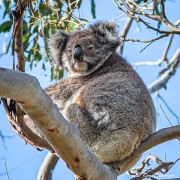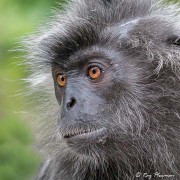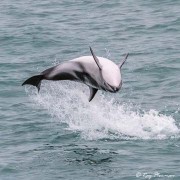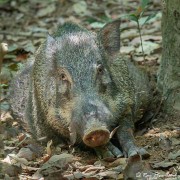Mammals
This album page provides links to galleries that feature images of Mammals. Each gallery displays individual species and juvenile/immature species when I have photographed them together with some behaviour images. See Taxonomy note below.

Egg-laying and Marsupial Mammals
Monotremes are egg-laying mammals, while marsupials give birth to live young. Most female marsupials have a pouch in their lower belly, allowing them to nurture their young.

Colugo, Primates, Rabbits and Rodents
The album displays species from four of the five orders placed in Euarchontoglires clade. Images include species from the Colugo (Arboreal Gliding Mammal), Primates (Monkeys), Rabbit and Rodents (Squirrels, Agouti, Coypu, Mice and Rat) families.

Cetaceans and Marine Carnivores
Cetaceans are marine mammals comprising both the whale and dolphin families while fur seals and sea lions are marine Carnivores.

Land Carnivores, Ungulates and Bats
The photo album features species from three of six orders that belong to Euarchontoglires clade. Featured images include examples of species placed in Land Carnivore, Even-toed Ungulate and Bat families.
Mammal Taxonomy
Class Mammalia divides into two subclasses: Prototheria (Monotremes, Egg-laying mammals) and Theria (Live-bearing mammals) which comprising two infraclasses Metatheria (Marsupials) and Eutheria (Placental mammals). Some authors elevate these two infraclasses to subclass status.
The figures below show simplified taxonomic diagrams arranged in time-ordered evolutionary history that illustrate the arrangement of high-level mammal classification relevant to the photo album collections.
The first figure shows a simplified taxonomic diagram applicable to photo albums which contain:
(1) Order Monotremata (Monotremes) placed in subclass Prototheria (Egg-laying Mammals).
(2) The following three Marsupialia orders placed in subclass Theria (Therian mammals), infraclass Metatheria (Marsupial Mammals):
(a) Order Dasyuromorphia (Carnivorous Marsupials),
(b) Order Diprotodontia (Kangaroos, Wallabies, Possums, and relatives). This order splits into three suborders:
(i) Macropodiformes (Kangaroos, Wallabies, and relatives),
(ii) Vombatiformes (Wombats and Koalas),
(iii) Phalangeriformes (Possums),
(c) Order Peramelemorphia (Bandicoots).
[foogallery id=”17354″]
Most molecular phylogenetic studies place all Eutheria (Placental mammals) into the following four clades that share a common ancestor: Laurasiatheria, Euarchontoglires, Xenarthra and Afrotheria. Molecular phylogenetics analyses hereditary molecular differences, principally in DNA sequences.
The second figure shows a simplified taxonomic diagram applicable to subclass Theria (Therian mammals) infraclass Eutheria (Placental Mammals) which contain orders grouped in the following photo albums:
(1) Colugo, Primates, Rabbits and Rodents comprising four orders part of superorder Euarchontoglires:
(a) Order Dermoptera (Colugo), Arboreal Gliding Mammals,
(b) Order Primates (Primates), Suborder Haplorrhini (Monkeys),
(c) Order Lagomorpha (Rabbits),
(d) Order Rodentia (Rodents):
(i) Suborder Myomorpha / Superfamily Muroidea (Mice, Rats, and relatives),
(ii) Suborder Sciuromorpha (Squirrels and Relatives),
(iii) Infraorder Hystricognathi (Hystricognath Rodents).
(2) Cetaceans and Marine Carnivores placed in superorder Laurasiatheria containing:
(a) Order Cetacea (Cetaceans):
(i) Suborder Odontoceti (Toothed Whales),
(ii) Suborder Mysticeti (Baleen Whales),
(b) Order Carnivora (Marine Carnivores), suborder Caniformia (Caniform Carnivores) featuring Fur Seals & Sea Lions.
(3) Land Carnivores, Ungulates and Bats comprising the following three orders placed in superorder Laurasiatheria:
(a) Order Carnivora (Land Carnivores), Suborder Caniformia (Caniform Carnivores),
(b) Order Artiodactyla (Even-toed Ungulates), Hoofed Animals,
(c) Order Chiroptera (Bats).
[foogallery id=”17355″]